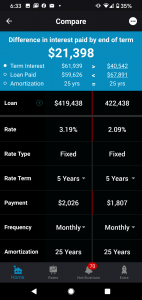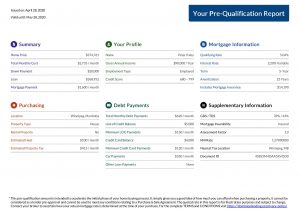| Prorogation on August 18, following the resignation of Finance Minister Morneau, a new session of Parliament, and a new speech from the throne was meant to allow the government to hit the reset button. And for Prime Minister Justin Trudeau, to try and move past the summer of controversy involving WE Charity and the Canada Student Service Grant.
THE FISCAL PICTURE
There was little opposition earlier this year when the federal government backstopped nearly every economic sector through emergency benefits, wage subsidies, and other programs. But with the federal deficit approaching $400 billion, there are growing calls to temper new spending.
The new Finance Minister, Christia Freeland, has consulted with former prime minister Paul Martin, who erased deficits as finance minister more than 20 years ago. And she claimed this week to be “well aware” of concerns about federal spending and the fiscal balance but said getting more people back to work was a top priority, along with managing a second wave of COVID-19 infections.
“The single most important economic policy of our government and the best thing we can do for our economy is to keep coronavirus under control,” Freeland said. “I can’t emphasize that too much. Some people sometimes like to talk about a trade-off between good health policy and good economic policy. I could not disagree more strongly.”
Today’s throne speech is one of the most highly-anticipated throne speeches in recent memory–amid a slowing economic recovery and rising COVID case counts. Though not an economic blueprint, it lays out Ottawa’s vision for what policy supports it believes are needed to carry the country through the next phase of recovery.
Measures already floated include improved permanent support for the unemployed–building on exceptional levels of policy support delivered over the spring and summer. Estimates for how much all of that will cost will await a fall fiscal update and subsequent budget.
COVID-19 CASE COUNTS TICK HIGHER AS THE ECONOMIC RECOVERY SLOWS
A barrage of reports issued in the past week reinforced what will probably be a historically large, and yet still only partial, bounce-back in economic activity over the summer in Canada. Home resales surged again in August. Reports on retail, wholesale, and manufacturing trade for July left GDP still on track to rebound 40% (at an annualized rate) in the third quarter. But that would only retrace only about 57% of the decline over the first half of the year. And early data – including Royal Bank’s tracking of credit card purchases–continue to flag a slowing pace of recovery.
Meantime, virus case counts are being watched more closely again in Canada, given a faster uptick in recent weeks, particularly in Ontario, Quebec, British Columbia, and Alberta. This latest wave of infections has been more concentrated among less vulnerable age cohorts, meaning fewer hospitalizations. Still, easing in containment measures has already been paused, and in some spots, reversed. At a minimum, the increased spread is another reminder that there are limits to how much the economy will recover while the virus threat remains.
In today’s speech from the throne, the Governor General was expected to lay out the government’s vision for the pandemic recovery. It won’t be easy, with COVID-19 cases on the rise and investor confidence wobbling. While the economy has improved since April lows, the recovery continues to be fragile–especially in the face of a possible second wave. Where should the government focus its investments? And if it survives the confidence vote, what could we expect in its next budget?
Trudeau insisted that he does not want a campaign soon — but would be ready if necessary. “I think it’s irresponsible to say that an election would be irresponsible,” Trudeau told reporters. “Our country and our institutions are stronger than that, and if there has to be an election, we’ll figure it out.”
“I don’t think that’s what Canadians want. I don’t think that’s what opposition parties want, and it’s certainly not what the government wants.”
A MATTER OF CONFIDENCE
Regardless of how many specifics or dollar figures are in the speech from the throne, it will be a confidence test for the Trudeau government, 15 seats shy of a majority in the House of Commons.
Without support from one major opposition party, an election is likely. But it’s not clear if that’s the kind of reset button opposition leaders are ready to press.
NDP Leader Jagmeet Singh wants a pledge to extend the Canada Emergency Response Benefit while the Employment Insurance system is reformed. And he wants a clear pledge to extend access to paid sick leave.
Singh told CPAC he heard no specific commitments from Prime Minister Justin Trudeau when the two spoke last week. But he will be watching for signals from the government, not just in the speech itself, but in the debate and legislation that follows.
From new Conservative leader Erin O’Toole, recently given a positive COVID-19 diagnosis: “Let’s see the plan, and if it’s for the betterment of the country, we’ll support parts of that plan. If we don’t see it, we’ll put forward our own vision”.
The Bloc Quebecois, meanwhile, has threatened to try and force an election over the WE affair unless Trudeau steps down. And the party wants increased health care transfers to the provinces, more support for seniors, respect for Quebec jurisdictions, and support for supply-managed farmers.
But their leader will not be on Parliament Hill as the House of Commons resumes; Yves-François Blanchet has tested positive for COVID-19 and tweeted Tuesday that he and O’Toole would wait to give their formal replies to the speech until after their isolation periods had ended.
ACTUAL MEASURES IN THE THRONE SPEECH
Overcoming pandemic is the key theme of the speech. COVID-19 has been incredibly hard for parents, especially women, young people, older adults, and Black and racialized Canadians. Low wage earners have been hardest hit.
Fight the pandemic and save lives
- Faster testing, short-term closure orders in high-case areas
- Help businesses in those areas
- Additional PPE funding
- More funding to keep schools safe
- Vaccine strategy
- Immunity task force led by scientists
Supporting Canadians Through this Crisis
- Emergency Wage Subsidy extended
- Job loss supports
- Government creates jobs, assists training, youth employment strategy,
- CERB recipients now supported by EI system–broadened to include self-employed and gig workers
- Action Plan for women–child care services, create a Canada-wide early childhood education system, after school programs, support for women entrepreneurs.
- Aid to small businesses
- Improve business credit, assistance to sectors hardest hit
Build back better to create a more resilient Canada
- Stimulus for recovery that is done prudently
- Reduce income inequality by raising taxes stock options and wealth
- Increase taxes on the digital giants that do business in Canada
- Defend the strength of the middle class
- Fighting climate change and commitment to sustainable growth
- Long-term care homes assistance, new standards for care
- Increase Old Age Security at age 75
- Primary care physicians for every region
- Mental Health resources increased
- National Universal Pharmacare
- Telemedicine
- Limiting firearms
- National Action Plan on gender-based violence
- Affordable housing growth
- All Canadians have access to highspeed internet
- Affordable regional air services
- Eliminate chronic homelessness
- Enhance First-time homebuyer incentive
- Address food insecurity and enhance local food supply chains, protect food workers
- Support farmers
- Introduce the most extensive training and education and accreditation programs in Canadian history
- Create good jobs in climate action sectors
- Exceed Canada’s 2030 climate goals
- More transit options, zero-emissions vehicles and batteries, electric charging stations
- Cut corporate tax rate in half for clean technology companies
- Support natural resource and oil companies as they move towards zero-emission and clean-energy goals
- Ban single-use plastics next year
- Clean water and irrigation plans
Stand up for who we are as Canadians–welcoming and fights discrimination
- We take care of each other, welcome newcomers, embrace two official languages
- Address systemic racism
- Help Indigenous, First Nations, and Mate peoples
- Take action on online hate, support employment of Blacks and racialized people
- Reform criminal justice system and law enforcement
- Encourage immigration and family unification
- Invest more in developing economies
- Support human rights, bring detained Canadians home
BOTTOM LINE
This is an ambitious agenda. Many of these proposals are sweeping commitments. Spending details will come later, likely in a fiscal update in November or December.
The speech did not extend the CERB, which the NDP said was a condition of support. Also, the NDP asked for paid sick leave, which was not mentioned.
Quickly following the speech, the Conservatives’ initial response was that they could not support this proposal. Among other things, they berated that there was no fiscal framework or anchor to prevent further downgrades of Canadian credit ratings. According to deputy leader Candice Bergen, Conservatives will not support a speech from the throne filled with “buzzwords” and “grand gestures” that ignores the ailing energy sector, farmers, the unemployed, and struggling small business owners.
The political posturing will continue.
In the next week, the speech will be debated, during which time, the government can make changes.
Prime Minister Justin Trudeau and other party leaders will address the nation at 6:30 pm ET/3:30 pm PT tonight. |



